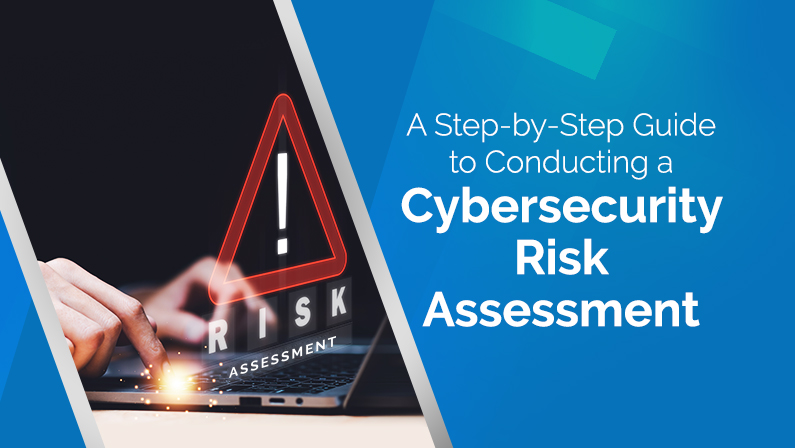In today’s digital age, cybersecurity is of paramount importance for organizations of all sizes and industries. Cyber threats are constantly evolving, and the consequences of a breach can be devastating. To effectively protect your organization’s sensitive information and assets, it’s crucial to conduct a cybersecurity risk assessment. This process helps you identify vulnerabilities, prioritize threats, and develop a comprehensive security strategy. In this article, we will provide a step-by-step guide to conducting a cybersecurity risk assessment and explore the advantages of doing so.
In our previous blog article, we looked at the advantages of a cybersecurity risk assessment. Now let’s delve into the step-by-step guide of conducting a Cybersecurity Risk Assessment:
Step 1: Define the Scope and Objectives
Before you dive into the assessment, clearly define the scope and objectives. Determine what assets you want to protect, which systems and networks you’ll assess, and what you hope to achieve with the assessment. Setting clear goals ensures that you focus your efforts on the most critical areas.
Step 2: Assemble Your Team
Cybersecurity is a collaborative effort, and it’s essential to assemble a team of experts from various departments, including IT, legal, compliance, and management. This interdisciplinary team will provide different perspectives and expertise to the assessment.
Step 3: Identify and Document Assets
Create an inventory of all your organization’s digital assets, including hardware, software, data, and intellectual property. Knowing what you need to protect is the foundation of a successful risk assessment.
Step 4: Identify Threats and Vulnerabilities
Determine potential threats and vulnerabilities that could compromise your assets. Threats can come from various sources, including hackers, malware, disgruntled employees, and natural disasters. Vulnerabilities can be weaknesses in your systems, processes, or human factors that can be exploited by these threats.
Step 5: Assess the Impact
For each identified threat, assess the potential impact on your organization. Consider factors such as financial losses, damage to reputation, regulatory fines, and legal liabilities. This step helps you prioritize which threats require immediate attention.
Step 6: Evaluate Existing Controls
Review your current cybersecurity measures and controls. This includes policies, procedures, technical safeguards, and employee training. Identify gaps between your existing controls and the threats and vulnerabilities you’ve identified.
Step 7: Calculate Risks
Assign a risk level to each threat based on its likelihood and potential impact. Use a risk assessment matrix or formula to quantify these risks. This step will help you prioritize which risks require mitigation.
Step 8: Prioritize Risks
Once you have calculated the risks, prioritize them based on their severity. Focus your resources on mitigating high-priority risks first to maximize the effectiveness of your cybersecurity efforts.
Step 9: Develop a Risk Mitigation Plan
Create a detailed plan for mitigating the identified risks. Specify the actions, resources, and timelines required to implement the necessary controls and measures. Make sure your plan aligns with your organization’s overall cybersecurity strategy.
Step 10: Implement and Monitor Controls
Put your risk mitigation plan into action. Implement the controls and measures you’ve identified, and continuously monitor their effectiveness. Regularly review and update your cybersecurity posture to adapt to evolving threats.
Step 11: Document and Report
Maintain comprehensive documentation of your risk assessment process, findings, and actions taken. This documentation is crucial for compliance purposes and can also serve as a reference for future assessments. Report your findings and progress to key stakeholders, including senior management and the board of directors.
Step 12: Review and Improve
Cybersecurity is an ongoing process. Regularly review and refine your risk assessment process to incorporate new threats and vulnerabilities as they emerge. Continuously improve your organization’s cybersecurity posture based on lessons learned from previous assessments.
Conducting a cybersecurity risk assessment is not just a best practice; it’s a strategic imperative in today’s digital landscape. The advantages of this process extend far beyond merely identifying vulnerabilities; they encompass informed decision-making, resource optimization, regulatory compliance, and reputation protection. By following the step-by-step guide outlined in this article and leveraging the advantages of risk assessment, your organization can proactively manage and mitigate cyber risks, ultimately enhancing its security posture and resilience in the face of evolving threats.
If you would like to learn more, schedule a call with us @ Understanding Risk Assessments





